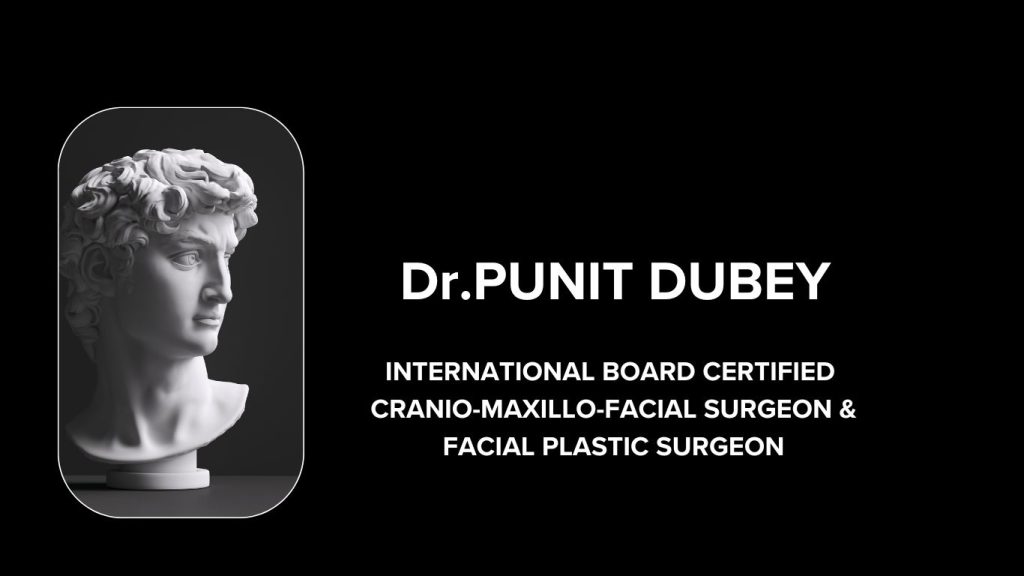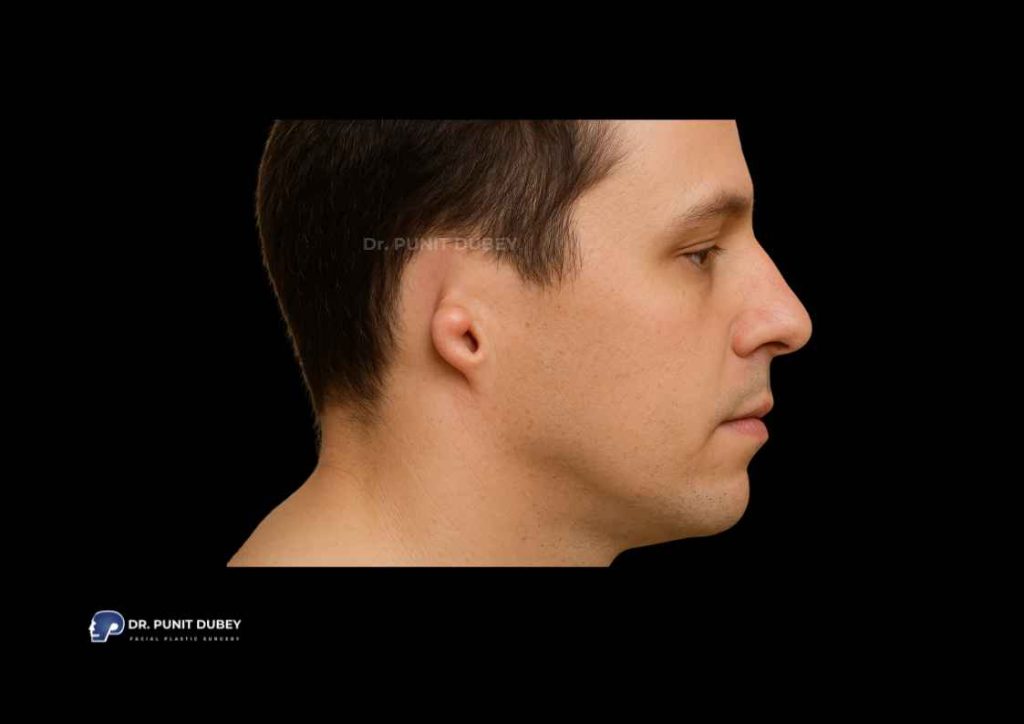
Microtia Surgery in Delhi, India
Imagine being born with one ear significantly underdeveloped—or in some cases, missing entirely. This is the lived experience for many individuals, both children and adults, born with microtia. Thankfully, microtia surgery in Delhi is helping patients reclaim both confidence and hearing through advanced reconstructive solutions. Under the expert care of Dr. Punit Dubey, a leader in facial plastic and reconstructive surgery, patients can now access international-grade outcomes with personalized attention.
Whether you’re a concerned parent researching for your child or an adult seeking correction later in life, this comprehensive guide will help you understand the condition, surgical solutions, recovery, and what sets Delhi apart as a destination for ear reconstruction surgery.
Let’s begin by understanding what microtia really is.
Table of Contents
What is Microtia?
Microtia is a birth defect where one or both ears are underdeveloped or missing. The term comes from Latin, meaning ‘small ear.’ Severity varies across four recognized grades. Microtia usually impacts one ear, most commonly the right side, and is more prevalent among males. The ear may appear as a small nub, a malformed lobe, or in severe cases, be completely missing (anotia).
Patients with microtia may also have:
- Aural atresia is a medical condition where the ear canal is either absent or severely narrowed.
- Hearing loss, particularly conductive hearing loss
- Associated facial differences, such as hemifacial microsomia
These abnormalities don’t just affect appearance—they also impair hearing and impact self-esteem, especially in social and academic settings.
Microtia Causes
When a baby is developing in the womb, the external ear (auricle) forms between the 5th and 8th weeks of gestation. Microtia happens when this process is interrupted or altered. While the exact cause of microtia is still not fully understood, researchers have identified several contributing factors.
- Genetic Factors
Microtia can be hereditary or part of genetic syndromes like Treacher Collins, Goldenhar (hemifacial microsomia), and CHARGE syndrome. In many individuals, microtia develops without any traceable hereditary link or predictable pattern.
2. Environmental Factors
Maternal factors during early pregnancy may increase risk:
- Poor nutrition
- Diabetes
- Certain medications or toxins
- High altitudes or low oxygen
Yet, no single cause is confirmed in most cases.
Microtia with Atresia
Microtia is often found alongside aural atresia, where a missing or narrowed ear canal contributes to hearing challenges. Early combined treatment is critical.
Microtia Grades
Understanding grades of microtia helps tailor treatment:
Grade 1
Small ear, mostly intact; hearing usually normal.
May not requires surgery.
Grade 2
Partially formed ear with narrowed canal; moderate hearing loss.
Needs surgery, often with canalplasty.
Grade 3 (Most Common)
Absent ear with lobular remnant; no canal.
Requires multi-stage reconstruction (rib/Su-por) + hearing support.
Grade 4 (Anotia)
Complete ear absence.
Complex reconstruction and hearing rehabilitation
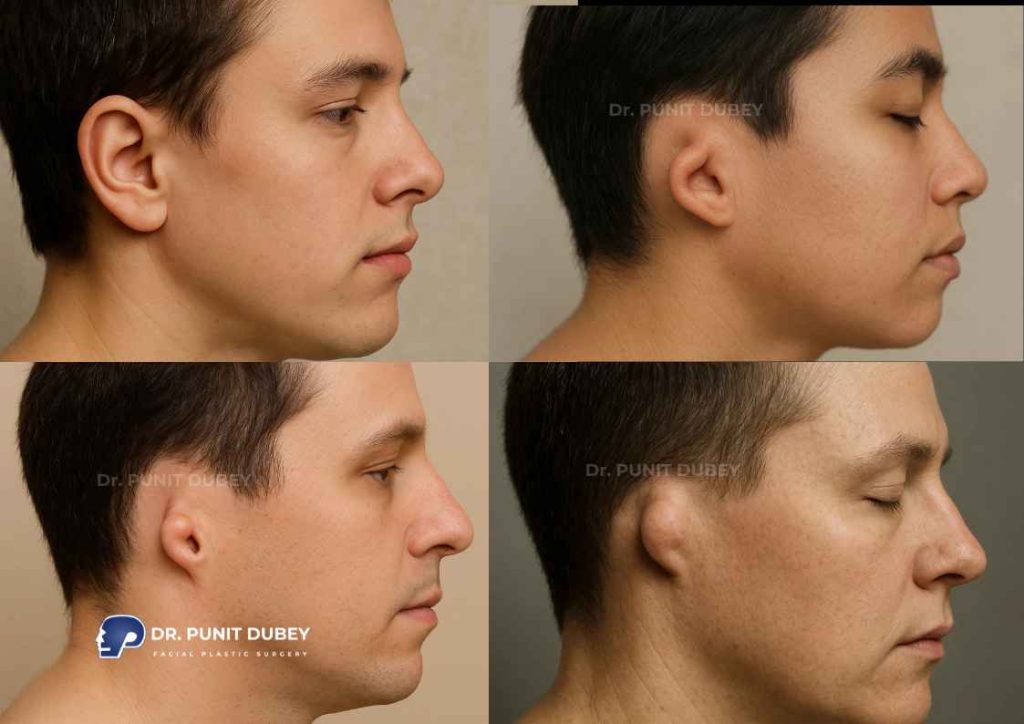
Microtia Associated Syndromes
Microtia may be part of syndromes affecting multiple facial structures:
- Goldenhar Syndrome: Jaw, ear, and spine underdevelopment
- Treacher Collins Syndrome: Features underdeveloped facial bones, malformed ears, and may include a cleft in the palate.
- CHARGE Syndrome includes birth defects affecting the eyes, heart, and ears.
- Nager/Miller Syndromes: Limb + ear deformities with hearing loss
In complex syndromic cases like Treacher Collins or Goldenhar syndrome, patients may also require additional facial reconstruction procedures such as jaw surgery, genioplasty, facial implants, or fat grafting to achieve balanced facial proportions and optimal function. Multidisciplinary care is essential for syndromic cases.
Ideal Candidates for Microtia Surgery in India
- Age 6–10
- Rib cartilage is developed
- Facial symmetry is easier to achieve
- Medpor can be used in older children or adults
- Hearing Loss
Surgery helps when combined with canaloplasty or hearing aids.
- Emotional Readiness
Children facing bullying or adults with self-image concerns benefit psychologically.
- Good General Health
No active infections or conditions that interfere with healing.
- Supportive Family
Parental involvement ensures proper recovery and emotional support.
What About Adults?
Microtia surgery for adults is increasingly popular in India, especially for:
- Unilateral microtia left untreated in childhood
- Bilateral cases needing hearing improvement
- Cosmetic correction for better facial symmetry
Dr. Punit Dubey regularly provides kids and adult microtia patients in Delhi with rib and advanced implant-based treatments and less invasive surgical techniques.
The Process of Microtia Surgery in Delhi
Undergoing microtia surgery in Delhi is a carefully planned journey that spans from initial consultation to full recovery. With access to advanced technology, skilled surgeons like Dr. Punit Dubey, and comprehensive care, patients in India can expect world-class results.
Here’s a simplified explanation of the surgical procedure:
Initial Consultation
Your journey begins with a detailed assessment by a qualified microtia ear reconstruction surgeon. During this session, the surgeon will:
- Examine the ear’s current anatomy
- Assess the grade of microtia and presence of atresia
- Review hearing test results
- Screen for associated syndromes or other craniofacial anomalies
- Decide on the reconstruction technique: rib cartilage vs Medpor implant
- Discuss age, expectations, and surgical readiness
Imaging, such as CT scans or radiographs, may also be done to evaluate the middle and inner ear structures.
Pre-Surgery Preparations
Once the surgical plan is finalized, the pre-op phase includes:
- Blood tests and anesthesia clearance
- Hearing aid trials, if required
- 3D ear modeling or photography for customized symmetry
- Parental counseling (for children) on procedure timeline and post-op care
Important: For rib cartilage techniques, the donor site (usually from the chest) will also be marked and evaluated.
The Microtia Surgery Process
The technique chosen will determine the exact approach. In India, there are two primary techniques widely used:
- Autologous Rib Cartilage Technique
- Done in multiple stages, typically 2–4 surgeries.
- The initial surgery involves removing rib cartilage, which is carefully shaped to form a new ear.
- This framework is placed under the skin at the ear site.
Further stages focus on lifting the ear and refining its shape for improved symmetry and appearance.
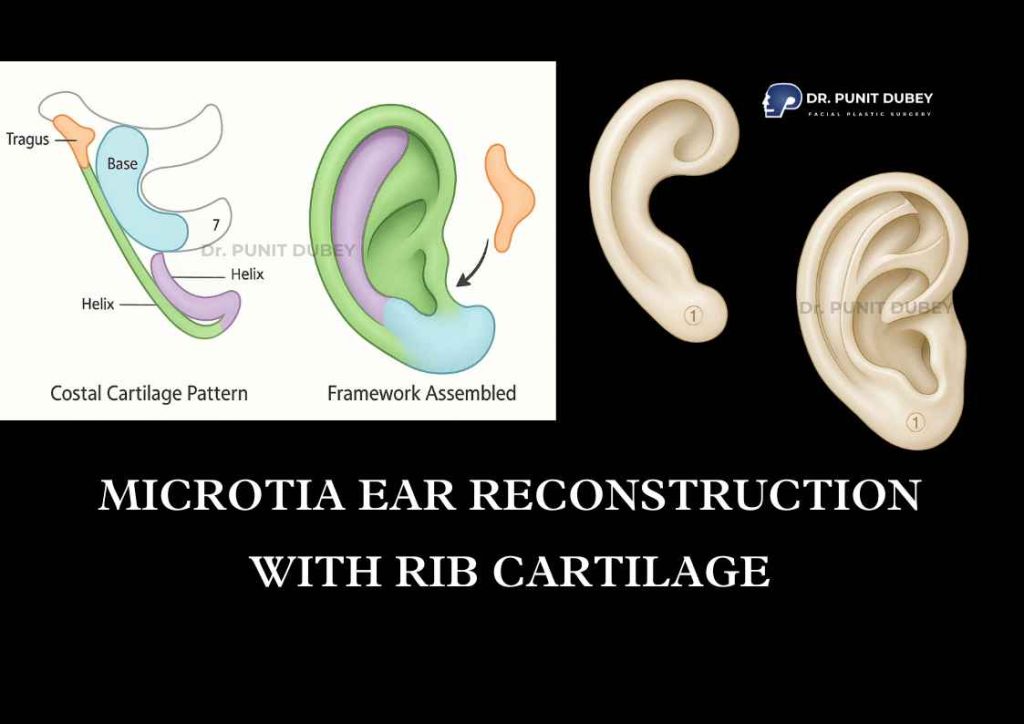
- Su-por Implant Surgery
- A synthetic porous polyethylene implant is shaped like an ear and inserted under the skin.
- Typically, single-stage surgery.
- Ideal for adults or children who are not candidates for rib cartilage grafts.
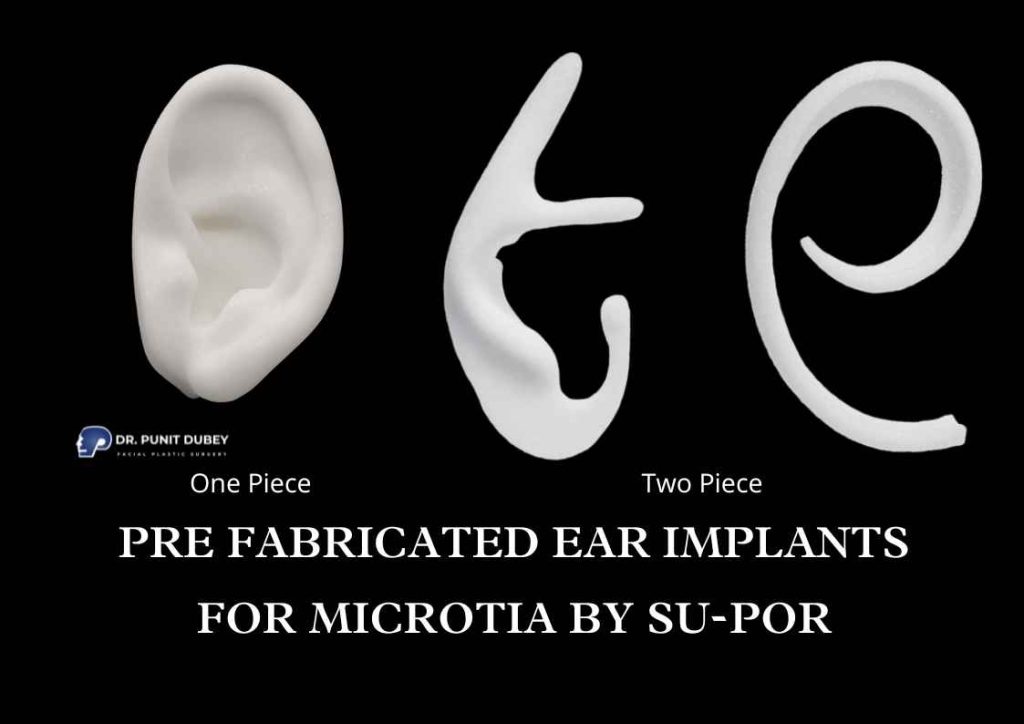
Both methods aim for symmetry, aesthetics, and long-term durability.
Post-Surgery Recovery
Recovery is usually smooth but requires close care:
- Hospital stays: 1–2 days post-surgery
- The ear is typically covered with sterile bandages for about one to one-and-a-half weeks following surgery
- Patients should take care not to rest on the reconstructed ear during sleep to protect the surgical site.
Most individuals are able to resume normal routines such as school or work within two to three weeks, based on how well they heal.
Microtia Surgery Recovery Time
Here’s a quick breakdown:
Stage | Recovery Time |
Stage 1 (Rib Cartilage) | 2–3 weeks |
Stage 2 (Elevation) | 1–2 weeks |
Su-por Implant | 10–14 days |
Full Shape Maturation | 3–6 months |
The ear continues to settle and mature over 6–12 months, with scar fading and natural contouring.
Benefits of Microtia Surgery
Undergoing microtia surgery is more than just cosmetic — it restores function, boosts confidence, and enhances quality of life. Whether performed in childhood or adulthood, the results are transformative.
- Improved Hearing
When combined with atresia repair or a BAHA device, surgery can restore conductive hearing, support speech development, and improve communication.
- Better Facial Symmetry
Reconstruction balances the face by creating a natural-looking ear, especially in unilateral microtia cases — improving overall appearance and profile. Protruding ears surgery might be required in normal ear if necessary to create more balanced profile.
- Higher Confidence
Surgery helps reduce social anxiety and bullying in children, and boosts self-image and public comfort for adults.
- Dramatic Before–After Results
Visible changes are often stunning. For many, the outcome of surgery marks a deeply transformative and confidence-restoring experience.
- Positive Psychosocial Growth
Kids benefit from:
- Greater peer acceptance
- Stronger self-identity
- Fewer emotional and speech delays
- Safe & Proven Techniques
Modern methods like rib cartilage grafting and Su-por implants offer long-lasting results with low risks — especially under experienced hands like Dr. Punit Dubey in Delhi.
Microtia Surgery Risks and Considerations
While microtia surgery is generally safe and highly rewarding, like any surgical procedure, it comes with its own set of risks and considerations. A well-informed decision ensures realistic expectations and better preparation for the recovery phase.
Here’s what you should know:
- Surgical Complications
Although rare when performed by an experienced microtia ear reconstruction surgeon, complications can include:
- Infection
- Bleeding or hematoma formation
- Delayed wound healing
- Framework exposure (especially in Su-por cases)
Proper post-op care and following instructions can significantly reduce these risks.
- Need for Revision Surgery
In some cases, especially with:
- Severe scarring
- Asymmetrical results
- Trauma to the reconstructed ear
A second corrective procedure may be required for contour adjustments or skin graft revisions.
- Framework Failure
- With autologous rib cartilage, failure is rare but possible if the graft doesn’t integrate well.
- With Su-por implants, there’s a slightly higher risk of framework exposure or rejection, particularly if the overlying skin is too thin or traumatized.
- Emotional Adjustment
While physical transformation is often dramatic, some patients — especially teens and adults — may need time to emotionally adjust to their new appearance. Psychological support can be helpful, particularly in syndromic microtia cases.
Microtia Surgery Side Effects
Most side effects are mild and temporary, especially when surgery is done at a trusted center. Common short-term effects include:
Side Effect | Duration/Resolution |
Swelling and bruising | Resolves in 7–10 days |
Mild pain or discomfort | Controlled with medication |
Numbness around the neo ear | Resolves within a month to six weeks. |
Mild chest discomfort from cartilage harvesting area | Typically eases as the body recovers over time |
Persistent issues like scar hypertrophy or framework irregularity are uncommon with expert planning and follow-up care.
Picking the Best Microtia Surgeon in India
When it comes to something as delicate and life-changing as microtia surgery, choosing the right surgeon is non-negotiable. Here’s what to look for:
Experience in Microtia Reconstruction
- Look for a surgeon who has specialized training in facial plastic surgery or craniofacial surgery.
- Surgeons like Dr. Punit Dubey, who perform both aesthetic and functional reconstructions, bring comprehensive understanding.
Familiarity with Both Rib and Implant Techniques
- The best surgeons can tailor the approach (rib vs implant) to the patient’s age, anatomy, and expectations.
Midface Lift Before and After: Real-life Transformations
Seeing is believing when it comes to cosmetic surgery. Midface lift before and after results clearly demonstrate the remarkable transformation patients experience. The procedure restores youthful volume to the cheeks, smooths out deep nasolabial folds, and lifts sagging skin, offering a refreshed appearance without looking overdone. Patients often report looking years younger, with improved facial balance and contour.
If you’re considering a midface lift surgery in Delhi, looking at before and after photos can help you visualize the potential results and set realistic expectations for your own transformation.
Why Choose Microtia Surgery in Delhi with Dr. Punit Dubey?
When it comes to microtia surgery in India, trust isn’t built on credentials alone — it’s built on real, life-changing results. At the heart of transformative care is Dr. Punit Dubey, a leading figure in craniofacial and reconstructive surgery who brings global training and compassion-driven care to every case.
Here’s what sets his work apart:
Pioneers in the Industry: Dr. Punit Dubey, Specialist in Ear Reconstruction
Dr. Punit Dubey has earned his reputation as one of the best microtia surgeons in India, thanks to his:
- Pioneer in patient specific 3D ear reconstruction in India
- Pioneer in Infant Ear Deformity correction in India using non-surgical techniques.
- Advanced fellowship training completed under internationally renowned experts in facial reconstructive procedures Specialized focus on ear reconstruction and craniofacial anomalies
- Dedicated expertise in Otoplasty correcting ear deformities and complex craniofacial conditions.
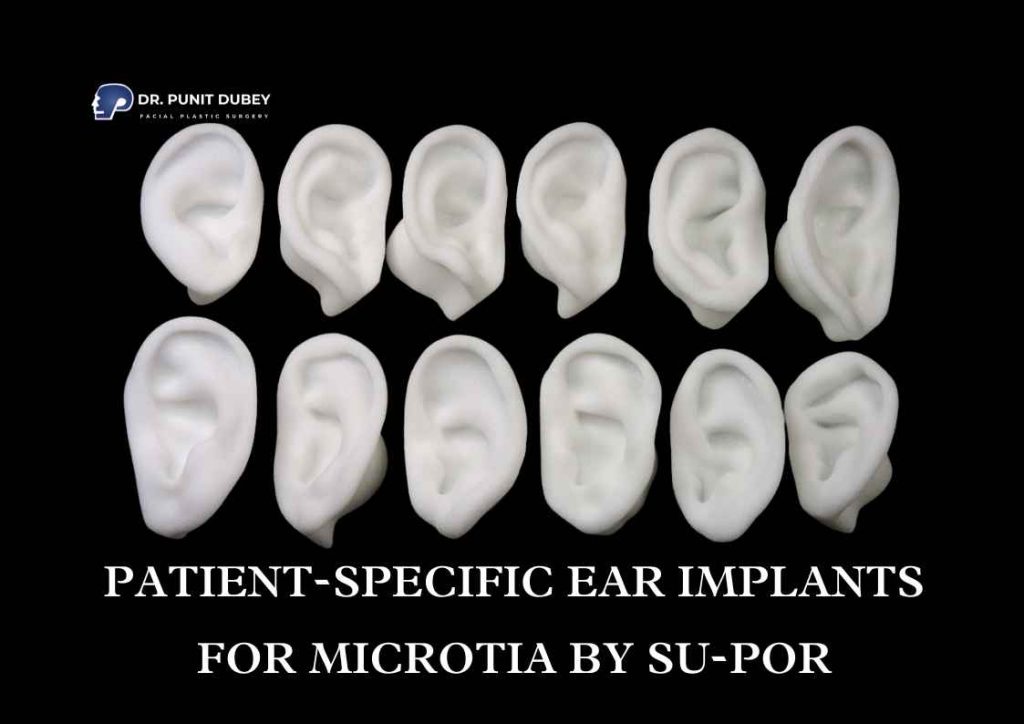
Proficient in both natural cartilage grafts and modern implant-based ear reconstruction approaches He approaches each microtia case with a personalized plan — often combining cutting-edge imaging, 3D planning, and soft tissue artistry to deliver the most natural-looking results.
Cost-effectiveness Compared to Other Cities
Choosing microtia surgery in Delhi with Dr. Dubey is not just a medical decision — it’s a smart investment. Here’s why:
- Delhi offers advanced microsurgical care at a fraction of the price you’d find in Western countries
- Even within India, the cost of surgery in tier-1 cities like Mumbai or Bangalore can be higher due to corporate hospital overheads
- Dr. Dubey’s clinic provides ethical pricing without compromising on surgical excellence.
Microtia Surgery Cost in India?
One of the most important factors for families considering treatment is understanding the microtia surgery cost in India. The good news? India offers world-class surgical outcomes at a fraction of what it would cost in Western countries — without compromising on quality, safety, or expertise.
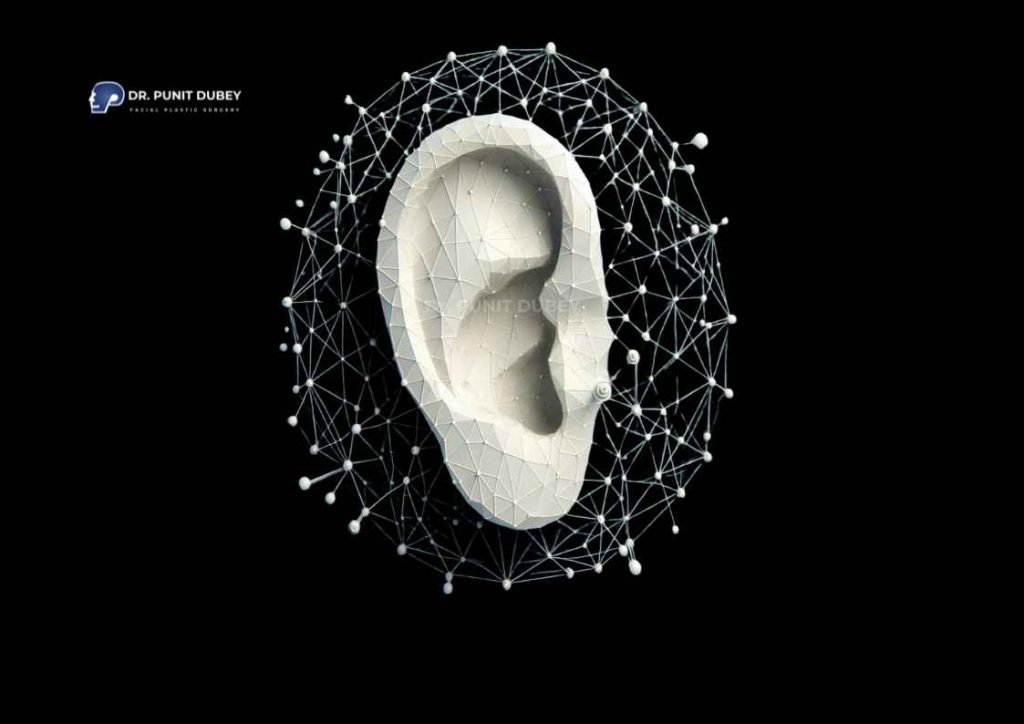
Let’s break down the pricing structure and what influences it:
Average Microtia Surgery Cost in India
Type of Surgery | Estimated Cost (INR) |
Rib Cartilage Microtia Surgery | ₹2,00,000 – ₹4,00,000 |
Su-por Implant Microtia Surgery | ₹3,50,000 – ₹6,00,000 |
Canalplasty / Hearing Canal Creation | ₹75,000 – ₹1,50,000 |
Hearing Aids (if required) | ₹25,000 – ₹75,000 |
Note: Prices vary based on city, surgeon expertise, hospital type, and whether single or multi-stage reconstruction is required.
Microtia Surgery Before and After: Real-Life Transformations
Seeing is believing. When it comes to microtia surgery, nothing inspires hope and confidence more than before and after images that showcase the dramatic difference reconstruction can make — not just cosmetically, but emotionally and functionally as well.
Visualizing the Transformation
Prior to undergoing treatment, individuals with microtia—whether children or adults—often live with visible ear underdevelopment or absence that affects both appearance and hearing.
- A visibly malformed or missing ear
- Noticeable facial asymmetry
- Hearing loss due to atresia
- Low self-confidence and social hesitation
After surgery, patients often have:
- The goal of reconstruction is to build a new ear that blends naturally with the patient’s facial features and aligns visually with the opposite ear.
- Restoration of facial harmony
- Improved self-esteem
These transformations aren’t just skin-deep — they change how a person sees themselves and how the world sees them.
FAQs on Microtia Surgery in Delhi
What is the best age for microtia surgery?
Reconstruction is most often recommended between ages six and ten, when the child’s cartilage is sufficiently mature for safe and effective grafting. By this time, rib cartilage is mature enough (if being used), and children are emotionally ready to participate in their care. However, microtia surgery for adults is also possible and becoming more common with synthetic implant options like Su-por.
Is microtia surgery painful?
Thanks to modern anesthesia and pain management, discomfort is minimal. Patients may feel some tightness or soreness, especially if rib cartilage is used. Most children and adults recover comfortably within a few weeks.
What is the typical number of operations involved in microtia correction?
It depends on the technique:
- Rib cartilage method usually requires 2–4 staged surgeries over several months.
- Su-Por implant technique can often be completed in one stage.
Is microtia considered a disability in India?
Yes, especially if it causes significant hearing loss or is part of a larger syndromic condition. In bilateral cases, patients may qualify for disability certification and benefits under government programs.
Microtia surgery cost in Delhi?
The cost typically ranges from ₹2,00,000 to ₹4,00,000, depending on the technique used (rib cartilage vs Su-por), surgeon expertise, and hospital infrastructure. Hearing restoration procedures or implants (if needed) may add to the total cost.
In Delhi, the cost is highly competitive, especially under top specialists like Dr. Punit Dubey. On average:
- Single-stage Su-por surgery may start around ₹3.5 – ₹4 lakhs does not include auricular implants.
- Rib cartilage ear surgery, when performed in multiple sessions, is generally priced between ₹2 lakhs and ₹3.5 lakhs in India, depending on the clinic and surgeon.
- Additional procedures (e.g., atresia repair) are priced separately
Clinics in Delhi often offer comprehensive surgical packages, which may include:
- Pre-op investigations
- Surgeon fees
- Anesthesia and operating room charges
- Hospital stays (1–2 days)
- Post-op dressings and follow-ups
Will the reconstructed ear look natural?
Absolutely — especially when performed by experienced surgeons like Dr. Punit Dubey. With proper planning, symmetry to the opposite ear and a realistic ear contour can be achieved. Most patients and families are highly satisfied with the cosmetic outcome.
Can microtia surgery improve hearing?
Yes, particularly when atresia repair or canal creation is combined with surgery. Even if the canal cannot be formed, bone-conduction hearing aids or implants can provide significant hearing improvement.
Final Thoughts
Choosing microtia surgery in Delhi with Dr. Punit Dubey means choosing expertise, empathy, and excellence. Whether you’re exploring options for your child or yourself, the right time to act is now. With the right team and timing, the results can be nothing short of life-changing.

